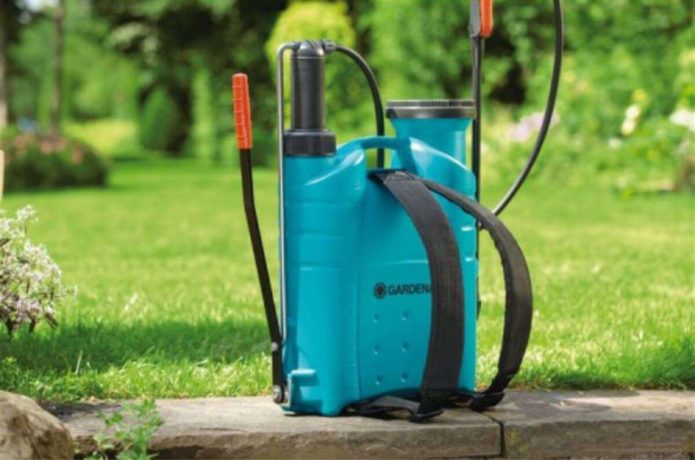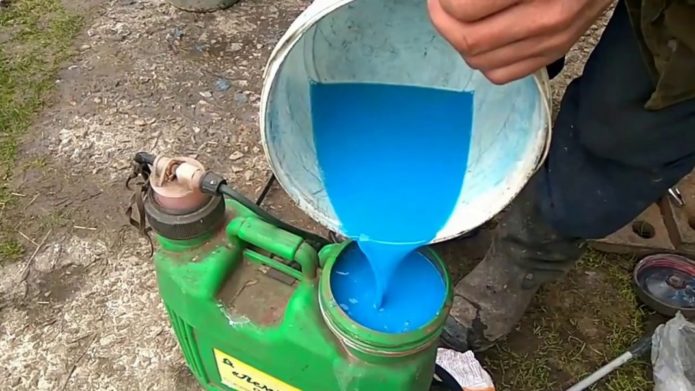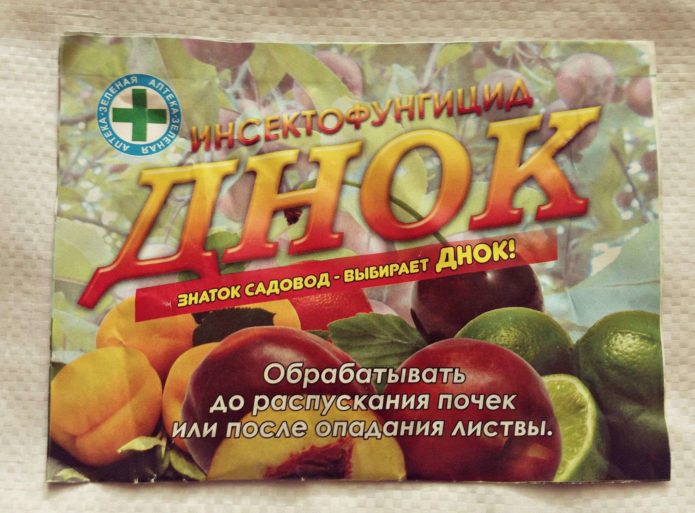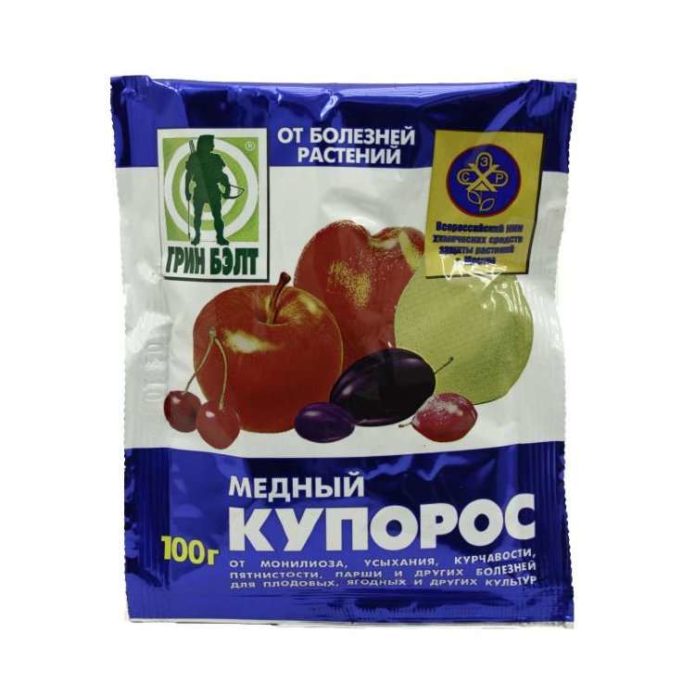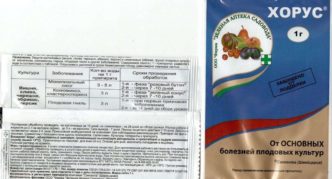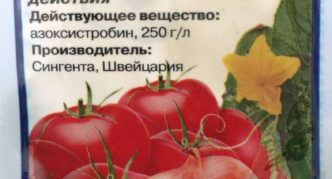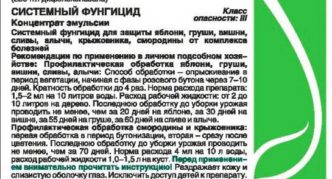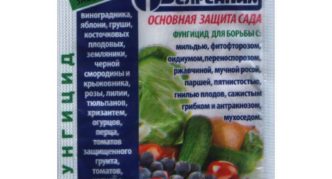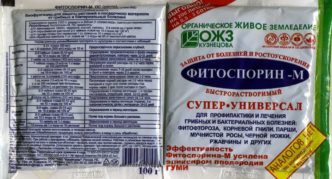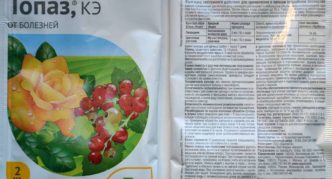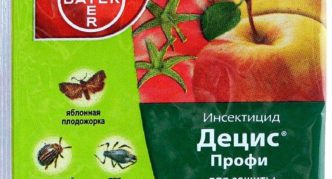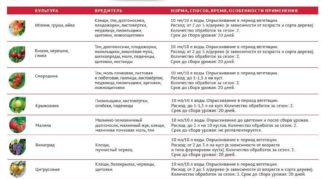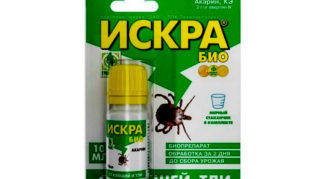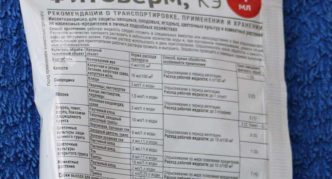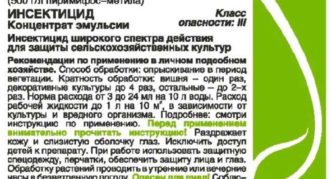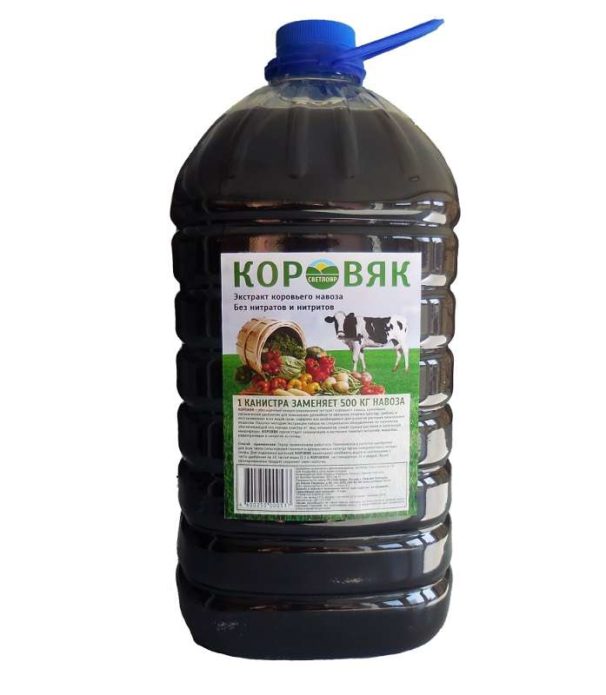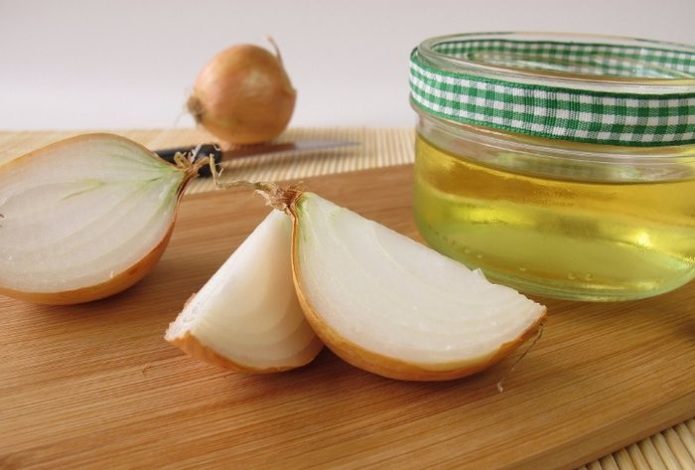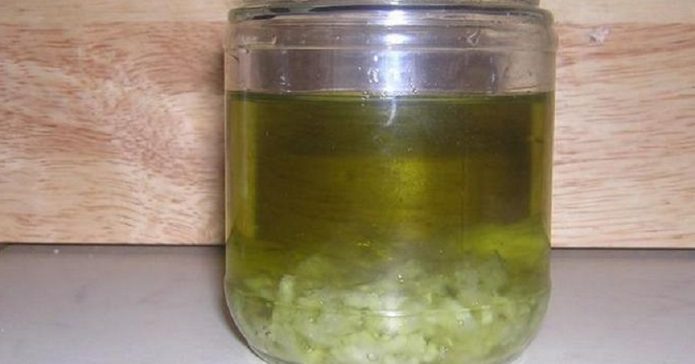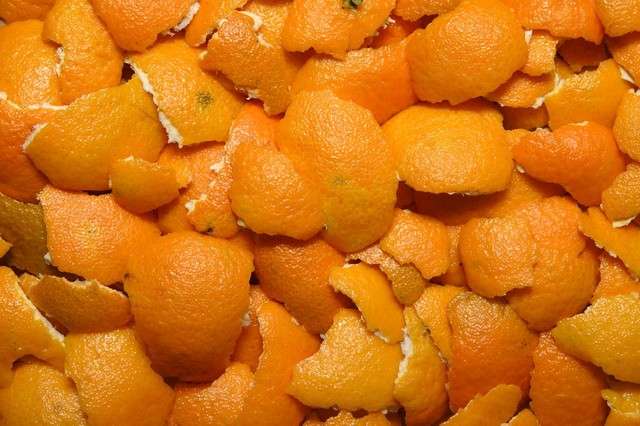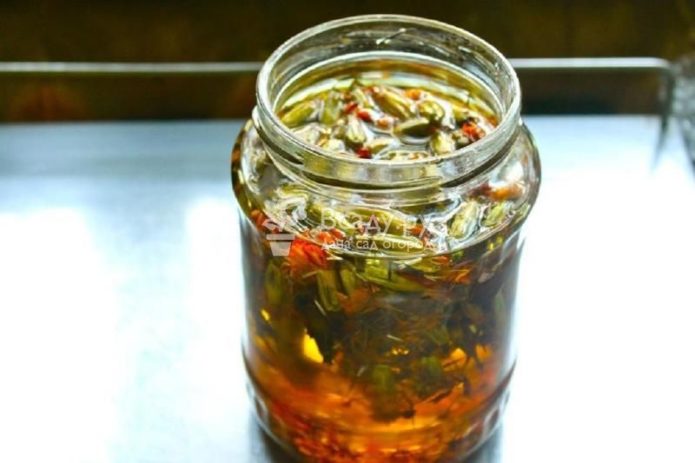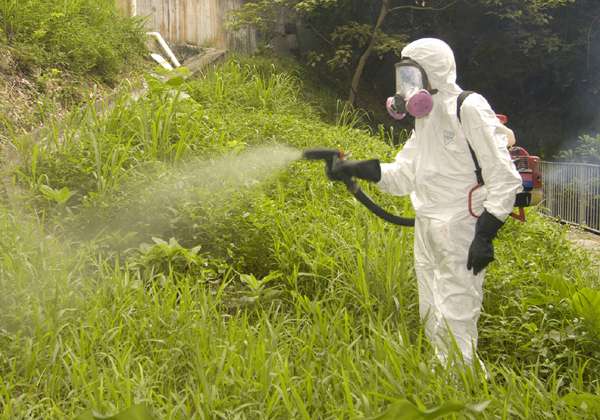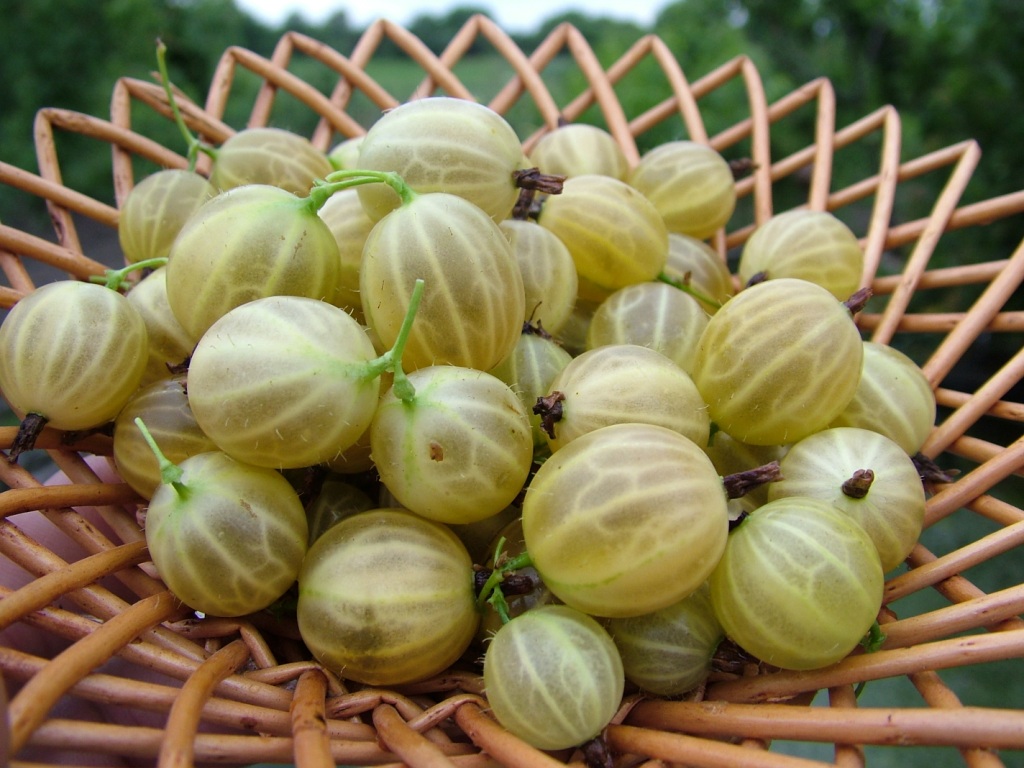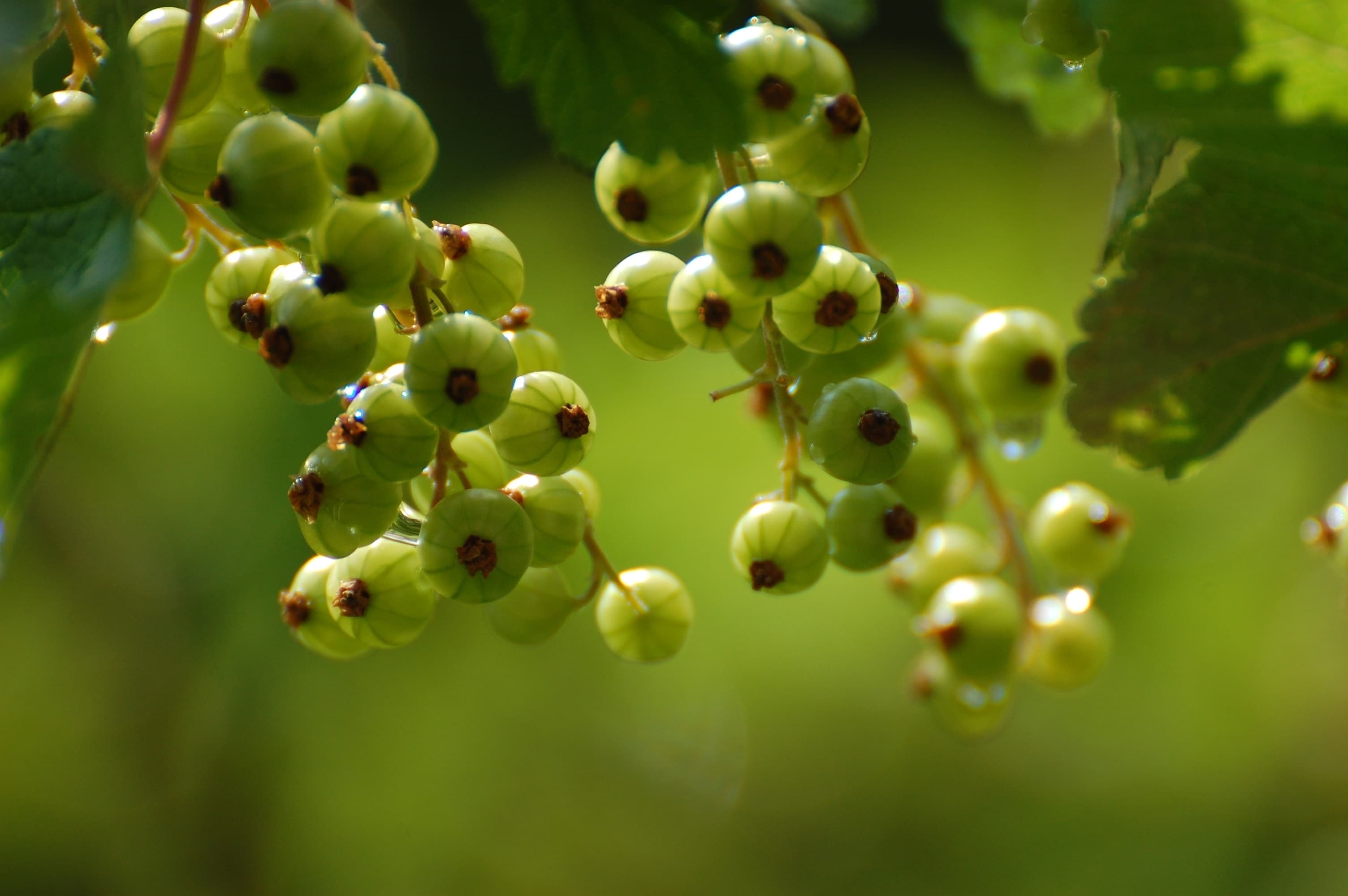Gooseberries and currants have many common possible diseases and pests. To combat them, there are various chemical, biological and folk remedies. It is sometimes difficult for an untrained gardener to understand the sea of information and our goal is to help him with this.
Content
The value of processing currants and gooseberries from diseases and pests, the similarity of these crops
The similarity of these two cultures is determined by their origin.
Smorodina (lat.Ríbes) is a genus of plants from the family Gooseberry (Grossulariaceae) of the order of dicotyledonous flowering plants Saxophores.
Common gooseberry, or rejected gooseberry, or European gooseberry (lat.Ríbes úva-críspa) is a plant species of the Gooseberry family (Grossulariaceae), currently considered in the genus Currant (Ribes).
Due to this similarity, pests and currant diseases and gooseberry are also common. Accordingly, the technology, processing times, methods and preparations used are the same for both crops, which are often susceptible to infection with fungal and viral diseases, as well as attack by pests. Let's just list the main representatives. Diseases:
- spheroteka (American powdery mildew);
- anthracnose;
- septoria (white leaf spot);
- goblet rust;
- verticillary wilting;
- terry;
- striped mosaic;
- gray rot, etc.
Pests:
- red currant aphid;
- shield;
- yellow gooseberry sawfly;
- gall midge leaf;
- currant kidney mite, etc.
Treatments are an important stage of agricultural technology; without their timely and regular implementation, one cannot count on a stable and high-quality harvest.
Terms and technology of processing currants and gooseberries
Since the vast majority of treatments are carried out by spraying with drug solutions, special garden sprayers are used for this. They come in various sizes and designs. The most popular are pump and knapsack sprayers. They are available in volumes from 5 to 20 liters. For a small number of treated plants, small hand sprayers with a capacity of 1-2 liters can be used.
The processing technology looks like this:
- Prepare a working solution of the desired drug in accordance with the attached instructions. Usually, a bucket is used that is dedicated specifically for this purpose.
- Pour the solution into the sprayer tank using a filtering can. This is necessary so that small, undissolved particles of dry preparations do not clog the spray nozzle.
- Screw the tank cap tightly and pressurize it using a pump or a lever pump (depending on the design of the sprayer).
- They put on personal protective equipment and start processing shrubs.
Treatments can be carried out under favorable conditions:
- Treatments should be carried out in calm weather. If, nevertheless, a weak breeze is present, then it is necessary to spray from the direction of its direction.
- It is desirable that the day of processing is cloudy. If this is not the case, then it should be sprayed early in the morning or in the evening before sunset.
- For obvious reasons, do not spray before rain. Modern formulations often contain adhesives to prevent them from being washed off by rain. In this case, the treatment can be carried out 2-3 hours before the expected rain. But it is still better if this interval is 1-2 days.
- And also it is impossible to carry out treatments immediately after the end of the rain. You need to wait until the leaves and shoots dry out.
- Early spring treatments are carried out only at positive temperatures.
Technologies for treating gooseberries from diseases and pests, depending on the season and type of preparation:https://flowers.bigbadmole.com/en/yagody/kryzhovnik/obrabotka-kryizhovnika-vesnoy-ot-bolezney-i-vrediteley.html
Processing currants and gooseberries in spring
Spores of pathogens of fungal diseases, various insects and their pupae can winter in the bark of stems, fallen leaves and the upper layers of the soil. In order to prevent their development, in early spring or even at the end of winter, they carry out eradicating treatments with potent drugs. At this time, apply:
- DNOC - once every three years;
- Nitrafen - in other years;
- 3% solution of copper sulfate or Bordeaux liquid.
Many gardeners at this time use boiling water for gooseberry and currant bushes. This method is believed to be highly effective against fungi and insects. For this, a bucket of boiling water is poured into a garden watering can. While it is being brought to the bush, the water temperature in it drops to 80-85 ° C - just right. After that, quickly and abundantly spill all the shoots with boiling water. They try to do this evenly and in one pass.
Important! Secondary treatment with boiling water is not allowed - this can destroy the escape.
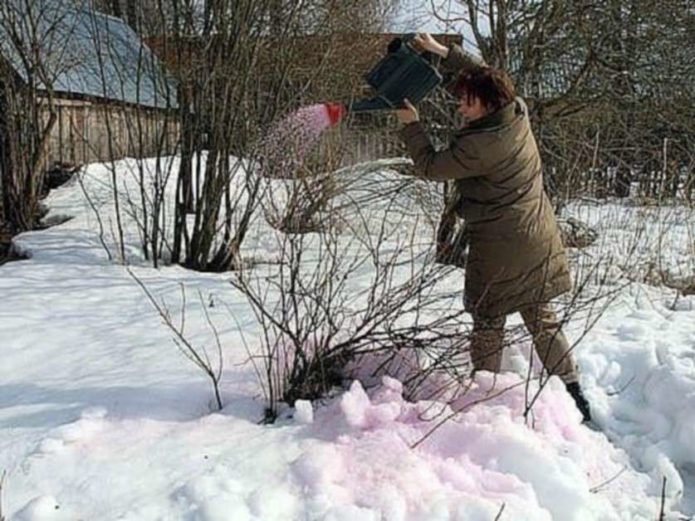
Processing currants and gooseberries with boiling water is effective against fungal diseases and pests
Some gardeners treat gooseberries and currants with a urea solution in early spring. This fertilizer is believed to have fungicidal and insecticidal properties. For processing, 70 grams of urea is dissolved in one liter of water and the plant is sprayed.
After the start of sap flow, treatments are carried out with drugs that are safer for humans and animals. They are divided into two groups - fungicides and insecticides.
Fungicides are used to prevent and treat fungal diseases. Insecticides are used to control insect pests. A separate subgroup is acaricides - drugs that act against ticks.
So, in the spring, three preventive treatments should be carried out against diseases and pests:
- Before flowering.
- After flowering.
- 7-10 days after the second treatment.
In order to save time, fungicide and insecticide treatments are often carried out simultaneously. For this, the preparations are mixed in one container. The result is a so-called tank mixture.You should be aware that not all drugs are compatible with each other, so you must first carefully study their instructions. We can recommend the long-proven mixture for processing gooseberries and currants - Actellik plus Topaz. The tank mix of Horus and Decis has also proven itself well.
Currant kidney mite, how to deal with it:https://flowers.bigbadmole.com/en/yagody/smorodina/pochkovyy-kleshch-na-smorodine-mery-borby-vesnoy.html
Video: processing currants with boiling water
Processing currants and gooseberries in summer
In the summer, without special need, chemical preparations for treatments can be omitted. In order to prevent fungal diseases, it is quite possible to do with the biological agent Fitosporin. Plants are treated with it during the growing season at intervals of two weeks without limiting the number of treatments. This drug is absolutely harmless to humans and animals, the fruits can be eaten immediately after processing. In case of an unexpected infection with any fungus, you can quickly and effectively deal with it with the help of the Strobi drug. But it can be applied no later than 20 days before harvest. It is recommended to use bioinsecticides against possible pests in the summer, for example, Fitoverm, Iskra Bio.
Processing currants and gooseberries in autumn
In the fall, when preparing the garden for winter, plants and soil are usually treated with a 3% solution of copper sulfate or 5% solution of iron sulfate. This should be done after the end of the growing season, having previously collected and removed the fallen leaves and dug up the soil of the trunk circles.
Preparations for the processing of currants and gooseberries to protect against pests and diseases and their use
Before treating plants with drugs, you must carefully study the attached instructions. When choosing a drug, attention is paid to its main parameters. It is especially important to adhere to the waiting period after processing before eating the fruit. And you also need to know that most drugs are addictive in pathogens and pests, after which the drugs lose their effectiveness.
Table: popular preparations for processing gooseberries and currants
| Drug name | Terms of application | Duration of protective action | Waiting period, days | Number of treatments per season |
| Potent pesticides | ||||
| DNOC | Early spring before bud swelling | One month | — | Once every three years |
| Nitrafen | 1 | |||
| Copper sulfate | Early spring, late autumn | 2 | ||
| Bordeaux mixture | ||||
| Fungicides | ||||
| Horus | Growing season | 7-10 days | 7—10 | 2—3 |
| Quadris | 15-20 days | 25 | 3 | |
| Topaz | 10-15 days | 20 | 3—4 | |
| Speed | 10-12 days | 2 | ||
| Strobe | 30 | 2 | ||
| Fitosporin (biofungicide) | Two weeks | 0 | Unlimited | |
| Insecticides | ||||
| Decis | Growing season | 15 days | 20 | 2 |
| Fufanon | 30 | |||
| Actellic | 20 | |||
| Spark Bio (bioinsecticide) | 7-20 days | 2 | Unlimited | |
| Fitoverm (bioinsecticide) | 3 |
Photo gallery: fungicides for diseases of gooseberries and currants
- Horus is a short-lived fungicide
- Quadris will protect gooseberries and currants from fungi within 2-3 weeks
- Scor is used at an early stage of infection
- Strobe quickly blocks fungal diseases
- Biofungicide Fitosporin can be used during the period when berries are eaten
- Topaz is a broad spectrum fungicide
Photo gallery: popular insecticides for the treatment of gooseberries and currants
- Decis is an effective broad-spectrum insecticide
- Fufanon is used at least one month before harvest
- Iskra Bio has a waiting period of only two days
- Fitoverm - bioinsecticide safe for humans
- Actellic is used against insects and ticks
Instructions for the use of Fitoverm, consumer reviews:https://flowers.bigbadmole.com/en/uhod-za-rasteniyami/udobreniya/instrukciya-po-primeneniyu-fitoverm-otzyvy-potrebiteley.html
Folk remedies
Many gardeners believe that the use of chemical plant protection products from diseases and pests can be successfully replaced with safer and more environmentally friendly folk remedies.
Treatment of shrubs with birch tar
This natural remedy has antiseptic, antimicrobial and antiparasitic properties. Its specific smell repels many insects. The use of birch tar is especially effective against aphids, gooseberry fire butterflies and gooseberry sawfly. For processing, it is simply stirred in warm water with the addition of soap as an adhesive. Dosages (as is often the case with folk remedies) are used in different ways. From one or two tablespoons of tar per bucket of water to five or more.
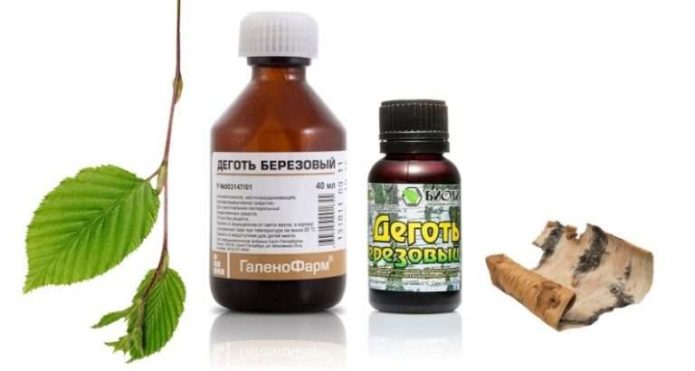
Especially effective is the use of birch tar against aphids, gooseberry fire butterflies and gooseberry sawfly
Soda treatment
Soda is used to combat powdery mildew on gooseberry and currant leaves. Dissolve 40 grams of baking soda in ten liters of water and add an adhesive (such as laundry soap). This remedy also helps with some other fungal diseases.
Mullein treatment
To combat powdery mildew, an infusion of three liters of mullein in ten liters of water is sometimes used. After three days of infusion, it is diluted with water in a ratio of 1 to 3 and the plants are treated.
Processing with infusion of wood ash
Ash also helps deal with powdery mildew... Before use, you should insist one kilogram of sifted wood ash in a bucket of warm water. The infusion is ready for use in four days. If necessary, the treatment is repeated after two weeks.
Onion infusion
One kilogram of onion is chopped in a meat grinder, poured with one liter of warm water. Insist for a day, after which they are used for spraying at a rate of 20 ml per 10 liters of water. The agent is effective against fungal diseases, aphids, ticks.
Garlic infusion
200 grams of chopped garlic is poured with four liters of boiling water, insisted for a week. Treat for whitefly, spider mite, kidney mite. Add 50 grams of infusion to one bucket of water.
Citrus infusion
Use citrus peels or spoiled fruits. One kilogram of raw materials is poured with ten liters of water and insisted for five days in a warm place. Treatments are carried out at intervals of two weeks. The tool is used to combat aphids, scale insects and mealybugs.
Processing with marigold infusion
One kilogram of dry marigolds is poured with one liter of boiling water. Apply after two days of infusion against fungal diseases, aphids, whitefly, ticks.
Safety measures during processing
When performing work with the use of pesticides, it is necessary to follow the safety rules:
- Persons without protective equipment, as well as children and animals are not allowed to be in the processing area.
- During the production of work, it is not allowed to eat, drink, smoke.
- Before starting work, you must wear protective clothing - a robe, overalls made of waterproof fabric.
- To protect your eyes and respiratory organs, you need to use safety glasses, a respirator or a cotton-gauze bandage.
- Before using the drug, you need to carefully study the instructions attached to it. It contains instructions for protection measures and actions in case of possible contact with the eyes or skin.
- If necessary, cover vegetables or greens growing nearby with a film to avoid getting the drug on them.
- After finishing the treatment, you need to wash your hands and take a shower.
Timely implementation of preventive and therapeutic treatments will help avoid diseases and pest attacks. In order to obtain environmentally friendly products, preference should be given to folk and biological means of protection, resorting to chemical only in cases of extreme necessity.
